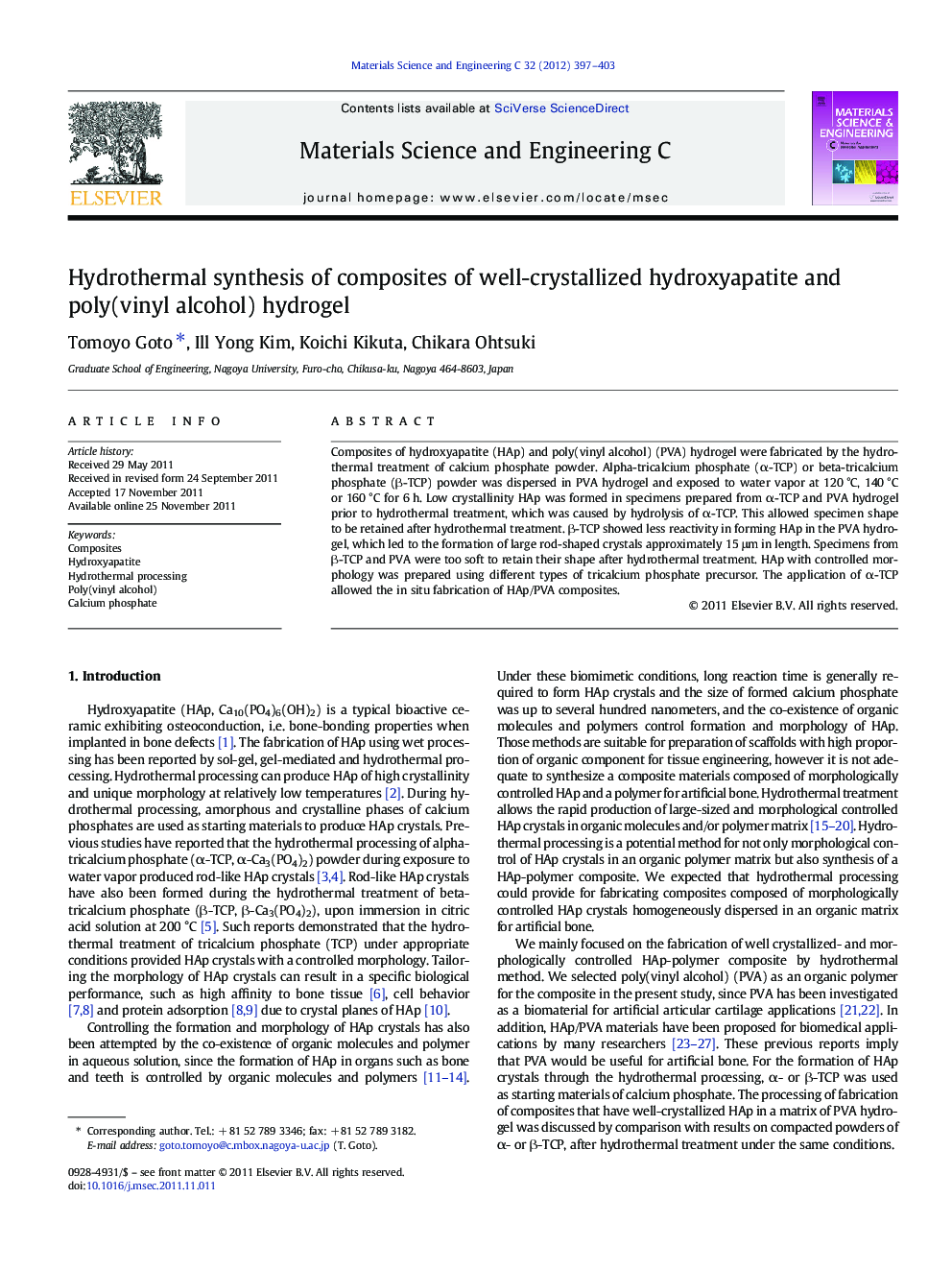| Article ID | Journal | Published Year | Pages | File Type |
|---|---|---|---|---|
| 1429116 | Materials Science and Engineering: C | 2012 | 7 Pages |
Composites of hydroxyapatite (HAp) and poly(vinyl alcohol) (PVA) hydrogel were fabricated by the hydrothermal treatment of calcium phosphate powder. Alpha-tricalcium phosphate (α-TCP) or beta-tricalcium phosphate (β-TCP) powder was dispersed in PVA hydrogel and exposed to water vapor at 120 °C, 140 °C or 160 °C for 6 h. Low crystallinity HAp was formed in specimens prepared from α-TCP and PVA hydrogel prior to hydrothermal treatment, which was caused by hydrolysis of α-TCP. This allowed specimen shape to be retained after hydrothermal treatment. β-TCP showed less reactivity in forming HAp in the PVA hydrogel, which led to the formation of large rod-shaped crystals approximately 15 μm in length. Specimens from β-TCP and PVA were too soft to retain their shape after hydrothermal treatment. HAp with controlled morphology was prepared using different types of tricalcium phosphate precursor. The application of α-TCP allowed the in situ fabrication of HAp/PVA composites.
► HAp with controlled morphology was formed in PVA hydrogel using TCP. ► HAp was formed in α-TCP/PVAgel before hydrothermal treatment. ► Large rod-shaped HAp was formed in β-TCP/PVAgel after hydrothermal treatment. ► Morphology of HAp was controlled by use of starting materials with different solubility. ► Transformation rate of TCP into HAp was accelerated by increasing water content surrounding TCP.
